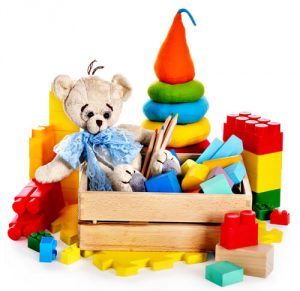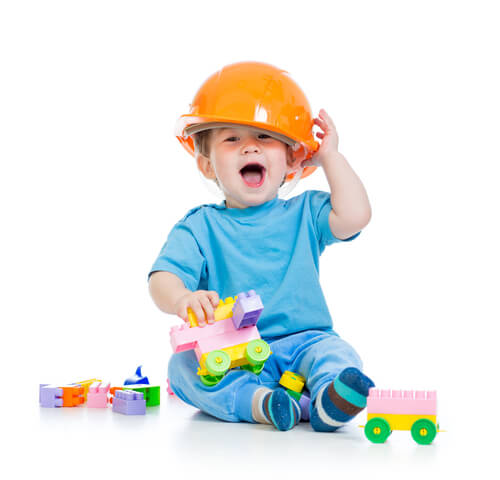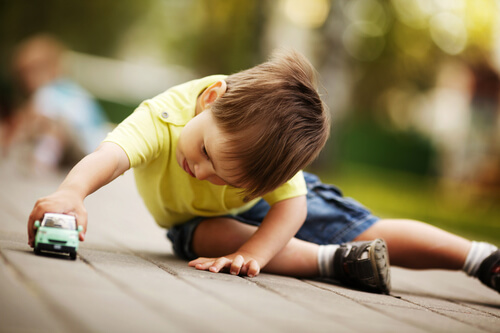How To Choose The Best Toys For Every Age


Reviewed and approved by the psychologist María Alejandra Castro Arbeláez
Choosing the best toys for your children is not child’s play. As we all know, the range of toys on offer at any store is huge and varied.
What’s more, the right toys can provide important benefits for children. It is difficult for children themselves to decide which toy is most appropriate.
So, which toys are suitable for each age range? And what should you take into account when choosing?
When children play, their mind and body work together. Playing teaches children about themselves, and about others. Every new toy or game is a new challenge, or a test to overcome. The right toys bring clear gains: auditory visual perception, coordination, body posture, and so on.
Therefore, toys stimulate intellectual, motor, emotional and social development at different stages of children’s growth. It is vital to understand that the development of play is gradual and continuous, so each phase builds on the results of the one before.

Safety and development
Toys contribute to the balanced physical, mental and social development of children. Playing is a form of learning, as little ones act out their emotional state and put into practice the social roles that they will fulfill as adults.
It is essential, therefore, to set aside a place for your child to play. Provide the best toys to stimulate their senses and enrich their world from an early age.
Another essential factor to consider is safety. In this sense, certain age groups may be at risk of hurting themselves with some types of toys. Although most toys are unlikely to cause serious harm, in the most severe cases inappropriate toys can cause death or permanent injury.
It may sound over the top, but the wrong toys can cause scratches, falls, burns, choking, strangulation or poisoning. As a result, parents should carefully select the right toys for their children, which will help them to safely develop their abilities.
5 tips for choosing the best toys
- Toys should be suitable for your child’s age, and should promote the development of different skills or attitudes.
- Toys should be safe. They should be made of material that does not splinter, break or tear. Look out for solid colors and non-toxic materials. The younger your child is, the larger the toys and their pieces should be.
- Keep toys simple. This way, your child can invent different uses for each toy, developing their imagination and understanding of symbols.
- Toys should complement their personality. For example, if your child is introverted, you can try out toys and games that encourage them to socialize, such as games with multiple players. For hyperactive children, the right toys can help develop their attention span, artistic abilities, and more.
- Remember that too many toys can stifle the imagination, and even lead to boredom.

The right toys for every age group
- From 0 to 6 months: babies need eye-catching toys that help them to discover their own body and distinguish between textures, shapes and colors. Suitable toys include rattles, mobiles, dolls, teething aids, plush toys, activity mats, etc.
- From 7 to 12 months: the child is now starting to explore objects and recognize voices. As well as choosing objects with different textures and colors, you can also incorporate sound and colored lights. You will find balls, rag dolls, musical toys and more.
- From 13 to 18 months: at this age, children are walking and can recognize the properties of objects. Bricks to stack and build, tricycles and cars are ideal for this age range.
- From 19 to 24 months: little ones are able to speak and understand, and are starting to understand the world around them. Cars, whiteboards or blackboards, paints, musical instruments, dolls, animals and string-pull toys are ideal. These toys should be colorful and easy to handle, such as shape-matching games and large building blocks.
- From 2 to 3 years: at this stage of development, children are starting to be curious about names and to imitate family scenes. Tricycles, balls, buckets and spades, puzzles, paints, telephones, cars and dolls are among the best toys at this age. Other options include plush and movable dolls, disguises and large, simple puzzles made out of foam or other materials.
- From 4 to 5 years: at this age, children are curious, and love to learn songs and interact with their peers. Look for bicycles, whiteboards or blackboards, toy tools or construction toys with large pieces, toy microphones, stories, puppets and articulated dolls, plasticine, etc.
- From 6 to 8 years: at this stage, children know how to add and subtract, read and write. You can give them skates, remote controlled cars, games involving quizzes and experiments, articulated dolls and dollhouses, kitchen utensils and more. At this age, you should also consider toys with rules to follow, such as memory games, board games, cards, large-print books with colorful illustrations and so on.
- From 9 to 11 years: at this age, children get interested in more complex activities. They will enjoy sports equipment, games of strategy and reflection, audiovisual or electronic games and experiments. Journals, sketchbooks, train sets, car tracks, modeling kits, board games and others can help to strengthen their intelligence.
All cited sources were thoroughly reviewed by our team to ensure their quality, reliability, currency, and validity. The bibliography of this article was considered reliable and of academic or scientific accuracy.
- Instituto de consumo de Extremadura. Un juguete para cada edad. Extraído de: https://saludextremadura.ses.es/filescms/incoex/uploaded_files/CustomContentResources/UN_JUGUETE_PARA_CADA_EDAD.pdf
- AIJU. (2019). Juego y juguete 2019/2020 – Guía AIJU. AIJU, Instituto Tecnológico de Producto Infantil y Ocio. https://guiaaiju.com/guias/Guia-AIJU-2019-20.pdf
This text is provided for informational purposes only and does not replace consultation with a professional. If in doubt, consult your specialist.
